#indian space scientist
Text
0 notes
Text
NASA/Boeing/ULA : ગુજરાતીમૂળની વૈજ્ઞાનિક સુનીતા વિલિયમ્સ આજે ફરીવાર અંતરીક્ષ માટે ભરશે ઉડાણ, બનાવશે વધુ એક રેકોર્ડ
NASA/Boeing/ULA : આજે રાત્રે ભારતીય મૂળની અવકાશયાત્રી સુનિતા વિલિયમ્સ ફરીવાર અંતરીક્ષ માટે ઉડાણ ભરશે, આ વખતે સુનિય વિલિયમ્સ તેના સાથીદારો સાથે નવા સ્પેસ ક્રાફ્ટમાં ઉડાન ભરવાની છે. ભારતીય સમય અનુસાર આજે રાત્રે 10 વાગ્યે ફ્લોરિડાના કેનેડી સ્પેસ સેન્ટરથી બોઈંગના સ્ટારલાઈનર સ્પેસક્રાફ્ટથી સ્પેસમાં જશે. અગાઉ સુનિતા વિલિયમ્સ 7 મેના રોજ સ્પેસમાં જવાના હતા. પરંતુ, સ્પેસ ક્રાફ્ટના ઓક્સિજન વાલ્વમાં ટેકનિકલ…
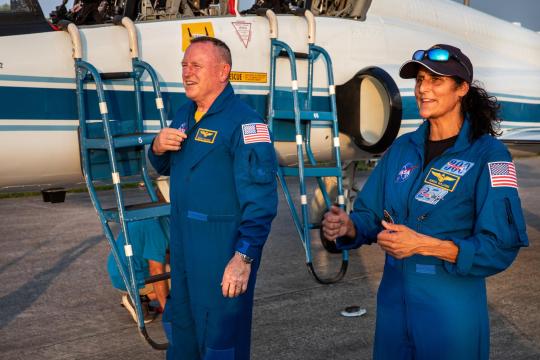
View On WordPress
#gujarat#india#Boeing#Boeing&039;s Starliner spacecraft#Florida#fly into space again#fly to space#Gujarati origin#INDIA#Indian-origin astronaut Sunita Williams#Kennedy Space Center#nasa#scientist Sunita Williams#ULA#अंतरिक्ष में उड़ान#कैनेडी स्पेस सेंटर#गुजरात#गुजराती मूल#नासा#फिर से अंतरिक्ष में उड़ान#फ्लोरिडा#बोइंग#बोइंग का स्टारलाइनर अंतरिक्ष यान#भारत#भारतीय मूल की अंतरिक्ष यात्री सुनीता विलियम्स#यूएलए#वैज्ञानिक सुनीता विलियम्स#અવકાશમાં ઉડાન#કેનેડી સ્પેસ સેન્ટર
0 notes
Text

#Chandrayaan-3#the third lunar mission of the Indian Space Research Organization (ISRO)#made a soft landing on the Moon.#World victorious tricolor dear#now the moon is ours🚀🇮🇳#India became the first country in the world to successfully reach the south polar region of the Moon. The landing of Chandrayaan-3 created#today is a proud day for India.#This historic and proud achievement is a symbol of determination#hard work and sacrifice of our scientists.#Congratulations to the countrymen and the entire ISRO team associated with Chandrayaan-3 and best wishes for the future.#ISRO#Chandrayaan3#Chandrayaan3Landing#VikramLander#दीनबंधुसरछोटूरामधाम#JatSewaSangh
1 note
·
View note
Text
Congratulations ISRO for the successful soft landing of Chandrayan-3!!!

Heartiest Congratulations to the Scientists of ISRO for making mission Chandrayan-3 a grand success!!!
#Chandrayaan3#ProudIndianAchievement#ProudIndianmovement#chandrayaan#scientists#trending#india#isro#space#moon#indian#satellite
0 notes
Text
Chandrayaan 3 Successfully Landed on Moon!!!
History created!!!
Well Done isroindiaofficial for achieving a milestone in landing Chandrayaan 3 successfully on Moon!
Bharat, my home. ❤️The first ever country to land on the SOUTH pole of the Moon!
A whole new era begins in India's space 🚀exploration programme

#chandrayaan 3#isro india#india#chandrayaan#technology#news#indian moon mission#successful moon landing#rocket#vikram#Moon rover#bharat#moon mission#polar south#national pride#space scientists#rocket science#Jai Hind#love my country#space exploration#space travel#space talks#space thoughts#space shuttle#blogs#blog#blogging#writing#creative writing#writer
1 note
·
View note
Text
everyone celebrating india's mission to the moon's south pole i love you and im with you but this is NOT india's first accomplishment in space!! im seeing a lot of people saying that but its not true. some other things we've done:
confirm the presence of water and ice on the moon
was the first asian nation to reach mars orbit, and the first nation IN THE WORLD to reach it in it's maiden attempt
saved thousands of lives from cyclone phailin in 2013 over the four days, resulting in 45 deaths when without them, would have been in the thousands at minimum
launched the first successful flight using the indigenous cryogenic engine
successfully neutralized a satellite in space with an anti-satellite (mission shakti, anyone?)
launched 104 satellites with one (1) rocket
THE VIKAS ENGINE??? HELLO?? NAMBI NARAYANAN??? even if you didnt know him before, surely youve seen the movie rocketry?
not to mention everything we've done in coordination with other nations, and achievements from Indian scientists and astronauts that were then taken by other nations, usually during war. plus, we've always been much more cost efficient than our space-faring peer nations
all to say!! we've always been there, and we've always been strong. our mission now only proves that, and we should scream it loud and proud for any westerner who ignores us again
13K notes
·
View notes
Text
A. P. J. Abdul Kalam -The Extraordinary Journey
Discover the extraordinary journey of A. P. J. Abdul Kalam, the renowned scientist, educator, and former President of India. Join us as we delve into the life and achievements of the Missile Man of India, who played a pivotal role in shaping the nation's space and defense programs. Explore his inspiring leadership, unwavering dedication to education, and timeless legacy that continues to inspire generations. Get ready to be inspired by his words, 'Dream, dream, dream. Dreams transform into thoughts and thoughts result in action.' Watch now and be part of the incredible story of Abdul Kalam, a visionary, leader, and national icon. #AbdulKalam #Inspiration #DreamBig
APJAbdulKalam #AbdulKalam #MissileManOfIndia #Inspiration #DreamBig #Leadership #Education #Science #Technology #YouthEmpowerment #IndianHero #Motivation #NationBuilder #Legacy #Visionary #Innovation #PresidentOfIndia #SpaceProgram #AerospaceEngineering #Rameswaram #DreamsTransform #RoleModel #SuccessStory #InspiringQuotes #IndianIcon
youtube
#Abdul Kalam#A. P. J. Abdul Kalam#Missile Man of India#President of India#Indian scientist#Inspirational leader#Education advocate#Aerospace engineering#Space and defense programs#Youth empowerment#Visionary#Dream big#Motivational speaker#Nation-building#Legacy#Inspiration#Scientific achievements#Education reform#Leadership qualities#Indian icon#Rameswaram#Indian President#Scientific innovation#India's space program#India's defense advancements#Quotes by Abdul Kalam#Youth motivation#Role model#Achievements and contributions#Inspirational speeches
0 notes
Text
1 note
·
View note
Text
இந்திய விண்வெளி ஆராய்ச்சி மையத்தில் பணியிடங்கள் வெளியாகியுள்ளன..!
இந்திய விண்வெளி ஆராய்ச்சி மையத்தில் பணியிடங்கள் வெளியாகியுள்ளன..!
#govtjobs #upsc #ssc #currentaffairs #gk #ssccgl #ias #jobs #governmentjobs
இந்திய விண்வெளி ஆராய்ச்சி நிறுவனத்தின் பின் வரும் பணிகள் நிரப்புவதற்கான அறிவிப்பு வெளியாகியுள்ளன. மத்திய அரசு இந்த அதிகாரப்பூர்வ அறிவிப்பினை வெளியிட்டுள்ளது. இந்திய விண்வெளி ஆராய்ச்சி நிறுவனத்தின் பணிக்கு விண்ணப்பிக்க ஆர்வமுள்ளவர்கள் 29/11/2022 முதல் 19/12/2022க்குல் என்ற இனையத்தில் மூலமாக ஆன்லைன் மூலமாக விண்ணப்பிக்கவும். இப்பணிக்கு விண்ணப்பிக்கும் நபர்கள் விண்ணப்பிக்கும் முன்பு கீழ்க்கண்ட…

View On WordPress
#amazing facts about indian space research organisation#india space research organisation#india space research organization#indian space agency#indian space research#indian space research organisation#indian space research organisation (isro)#indian space research organisation news#indian space research organisation news today#indian space research organization#ISRO ICRB Recruitment 2022 Apply 68 Scientist Posts
0 notes
Text
when the British Empire's researchers realized that the cause of the ecological devastation was the British Empire:

much to consider.
on the motives and origins of some forms of imperial "environmentalism".
---
Since the material resources of colonies were vital to the metropolitan centers of empire, some of the earliest conservation practices were established outside of Europe [but established for the purpose of protecting the natural resources desired by metropolitan Europe]. [...] [T]ropical island colonies were crucial laboratories of empire, as garden incubators for the transplantation of peoples [slaves, laborers] and plants [cash crops] and for generating the European revival of Edenic discourse. Eighteenth-century environmentalism derived from colonial island contexts in which limited space and an ideological model of utopia contributed to new models of conservation [...]. [T]ropical island colonies were at the vanguard of establishing forest reserves and environmental legislation [...]. These forest reserves, like those established in New England and South Africa, did not necessarily represent "an atavistic interest in preserving the 'natural' [...]" but rather a "more manipulative and power-conscious interest in constructing a new landscape by planting trees [in monoculture or otherwise modified plantations] [...]" [...].
Text by: Elizabeth DeLoughrey and George B. Handley. "Introduction: Toward an Aesthetics of the Earth". Postcolonial Ecologies: Literatures of the Environment, edited by DeLoughrey and Handley. 2011.
---
It is no accident that the earliest writers to comment specifically on rapid environmental change in the context of empires were scientists who were themselves often actors in the process of colonially stimulated environmental change. [...] As early as the mid-17th century [...] natural philosophers [...] in Bermuda, [...] in Barbados and [...] on St Helena [all British colonies] were all already well aware of characteristically high rates of soil erosion and deforestation in the colonial tropics [...]. On St Helena and Bermuda this early conservationism led, by 1715, to the gazetting of the first colonial forest reserves and forest protection laws. On French colonial Mauritius [...], Poivre and Philibert Commerson framed pioneering forest conservation [...] in the 1760s. In India William Roxburgh, Edward Balfour [...] ([...] Scottish medical scientists) wrote alarmist narratives relating deforestation to the danger of climate change. [...] East India Company scientists were also well aware of French experience in trying to prevent deforestation [...] [in] Mauritius. [...] Roxburgh [...] went on to further observe the incidence of global drought events which we know today were globally tele-connected El Nino events. [...] The writings of Edward Balfour and Hugh Cleghorn in the late 1840s in particular illustrate the extent of the permeation of a global environmental consciousness [...]. [T]he 1860s [were] a period which we could appropriately name the "first environmental decade", and which embodies a convergence of thinking about ecological change on a world scale [...]. It was in the particular circumstances of environmental change at the colonial periphery that what we would now term "environmentalism" first made itself felt [...]. Victorian texts such as [...] Ribbentrop's Forestry in the British Empire, Brown's Hydrology of South Africa, Cleghorn's Forests and Gardens of South India [...] were [...] vital to the onset of environmentalism [...]. One preoccupation stands out in them above all. This was a growing interest in the potential human impact on climate change [...] [and] global dessication. This fear grew steadily in the wake of colonial expansion [...]. Particularly after the 1860s, and even more after the great Indian famines of 1876 [...] these connections encouraged and stimulated the idea that human history and environmental change might be firmly linked.
Text by: Richard Grove and Vinita Damodaran. "Imperialism, Intellectual Networks, and Environmental Change: Origins and Evolution of Global Environmental History, 1676-2000: Part I". Economic and Political Weekly Vol. 41, No. 41. 14 October 2006.
---
Policing the interior [of British colonial land] following the Naning War gave Newbold the opportunity for exploring the people and landscape around Melaka […]. Newbold took his knowledge of the tropical environment in the Straits Settlements [British Malaya] to Madras [British India], where he earned a reputation as a naturalist and an Orientalist of some eminence. He was later elected Fellow of the Royal Society. Familiar with the barren landscape of the tin mines of Negeri Sembilan, Newbold made a seminal link between deforestation and the sand dune formations and siltation […]. The observation, published in 1839 […], alerted […] Balfour about the potential threat of erosion to local climate and agriculture. […] Logan brought his Peninsular experience [in the British colonies of Malaya] directly within the focus of the deforestation debate in India […]. His lecture to the Bengal Asiatic Society in 1846 […] was hugely influential and put the Peninsula at the heart of the emerging discourse on tropical ecology. Penang, the perceived tropical paradise of abundance and stability, soon revealed its vulnerability to human [colonial] despoilment […].
Text by: Jeyamalar Kathirithamby-Wells. "Peninsular Malaysia in the Context of Natural History and Colonial Science". New Zealand Journal of Asian Studies 11, 1. June 2009.
---
British colonial forestry was arguably one of the most extensive imperial frameworks of scientific natural resource management anywhere [...]. [T]he roots of conservation [...] lay in the role played by scientific communities in the colonial periphery [...]. In India,[...] in 1805 [...] the court of directors of the East India Company sent a dispatch enquiring [...] [about] the Royal Navy [and its potential use of wood from Malabar's forests] [...]. This enquiry led to the appointment of a forest committee which reported that extensive deforestation had taken place and recommended the protection of the Malabar forests on grounds that they were valuable property. [...] [T]o step up the extraction of teak to augment the strength of the Royal Navy [...] [b]etween 1806 and 1823, the forests of Malabar were protected by means of this monopoly [...]. The history of British colonial forestry, however, took a decisive turn in the post-1860 period [...]. Following the revolt of 1857, the government of India sought to pursue active interventionist policies [...]. Experts were deployed as 'scientific soldiers' and new agencies established. [...] The paradigm [...] was articulated explicitly in the first conference [Empire Forestry Conference] by R.S. Troup, a former Indian forest service officer and then the professor of forestry at Oxford. Troup began by sketching a linear model of the development of human relationship with forests, arguing that the human-forest interaction in civilized societies usually went through three distinct phases - destruction, conservation, and economic management. Conservation was a ‘wise and necessary measure’ but it was ‘only a stage towards the problem of how best to utilise the forest resources of the empire’. The ultimate ideal was economic management, [...] to exploit 'to the full [...]' and provide regular supplies [...] to industry.
Text by: Ravi Rajan. "Modernizing Nature: Tropical Forestry and the Contested Legacy of British Colonial Eco-Development, 1800-2000". Oxford Historical Monographs series, Oxford University Press. January 2006.
---
The “planetary consciousness” produced by this systemizing of nature [during the rise of Linnaean taxonomy classification in eighteenth-century European science] […] increased the mobility of paradise discourse [...]. As European colonial expansion accelerated, the homogenizing transformation of people, economy and nature which it catalyzed also gave rise to a myth of lost paradise, which served as a register […] for obliterated cultures, peoples, and environments [devastated by that same European colonization], and as a measure of the rapid ecological changes, frequently deforestation and desiccation, generated by colonizing capital. On one hand, this myth served to suppress dissent by submerging it in melancholy, but on the other, it promoted the emergence of an imperialist environmental critique which would motivate the later establishment of colonial botanical gardens, potential Edens in which nature could be re-made. However, the subversive potential of the “green” critique voiced through the myth of endangered paradise was defused by the extent to which growing environmental sensibilities enabled imperialism to function more efficiently by appropriating botanical knowledge and indigenous conservation methods, thus continuing to serve the purposes of European capital.
Text by: Sharae Deckard. Paradise Discourse, Imperialism, and Globalization: Exploiting Eden. 2010.
#abolition#ecology#indigenous#multispecies#imperial#colonial#temporal#temporality#debt and debt colonies#tidalectics#archipelagic thinking#caribbean#interspecies#victorian and edwardian popular culture
159 notes
·
View notes
Text
DAY 5948
Jalsa, Mumbai May 31-June 1, 2024 Fri/Sat 12:14 AM
🪔 ,
June 01 .. birthday greetings to Ef Barun Sen .. and Ef Manish Singh Rajpoot .. 🙏🏻🚩❤️
Belated birthday greetings to Ef Amit Agrawal from Seattle USA 🇺🇸 .. for May 31 .. 🙏🏻🚩❤️
..
and all the wishes for the birthdays from the Ef family .. love ❤️
so each day is a learning .. what I learnt today stays .. and is replicated to others , and in particular family and the dear ..
I learn today ..
aaahh .. never mind ..
it be not of interest or importance to share to the other .. there is ever the reason for it .. and it be that , better to get the sharing of another that is greatly more proficient and valued than what you may have picked up .. and that is and has been the practice, at least for me .. I may be of the opinion that my learning could be of value to another .. but what if his or her learning is sufficiently more interesting than mine .. to assume that yours is the best is my fallacy .. and fear in many ways .. to be put down is an embarrassment .. ever .. you think you know all but there are millions of others better than you .. you m ay be the strongest physical presence in your environ, until you turn a corner on the street and discover that there are several others stronger than you .. your boast goes to roast .. !!
so ..



come to me .. yes , come .. but -

wait .. wait .. wait .. !!
I am never the best ..
and wait .. wait .. waaaiiittttt .. could be the utterance from AAA in film coming out of an Easter egg , giberiging :
'the whole country of the system is juxtapositioned by the haemoglobin in the atmosphere .. !!'
but it was just ad. libbed at the recording by me .. not making any sense .. Manmohan Ji just allowed me to say any junk at my request .. just so it looks like a proficient English speaking Anthony, when indeed he is not .. and merely just rattling off some BUMFF .. !
AND ..
AND ..
AND ..
you shall be surprised and shocked as am I , that it was mere junk spoken by me .. but the Ef Bushra on a research of the film Amar Akbar Anthony by the interview given by Man ji to an English journalist or writer found this :
The song ‘My name is Anthony Gonsalves’ begins with these lines spoken by Anthony when he emerges from the Easter egg – “You see, the whole country of the system is juxtapositioned by the hemoglobin in the atmosphere because you are a sophisticated rhetorician intoxicated by the exuberance of your own verbosity.” It is an almost exact quotation from a speech in the Parliament of the United Kingdom given by British Prime Minister Benjamin Disraeli in 1878. Disraeli (who was referring to William Ewart Gladstone) used the word “inebriated” rather than “intoxicated.”
wooooaaaahhhh !!! 😳
AND .. hang on ..
I had some days ago either a letter or a WhatsApp message from a cinema fan and a very proficient scientist, I think from the US, an Indian doing research on space , that the words :
'juxtapositioned by the haemoglobin in the atmosphere'
is a scientific fact .. that indeed there is this factor and a reality, scientifically proven, of 'haemoglobin in the atmosphere, being juxtapositioned,' or something like this .. and his purpose of writing to me was ..
how did mr B know of this fact years before it was researched ..
🤣
🤣
🤣
NO NO NO sir .. I knew nothing .. they were just funny sounding words that were invented at the time of the song recording live by me, spontaneously, without any pre prep or meaning, and enacted in the song , my name is Anthony Gonsalves ... !!!!
OHHH .. BABY .. !!!
I must search that mail or letter .. to give the correct interpretation of this scientist ..
so where did we start today ..?
aaah yes .. learning ..
told you .. never a dull day ..🤨
Love night and dreams 😴

Amitabh Bachchan

... such a common phenomena 👆🏼 in the days of the cassette generation
🤣
108 notes
·
View notes
Text
Since some of y'all do not know how to celebrate our achievements in space exploration:
Facts:
1) India became the 5th ever country to reach the moon surface back in 2008 with Chandrayaan-1.
2) India is the 1st ever country to soft-land the south pole of the moon and 4th country to soft-land on moon.
3) India has never physically placed a flag on moon- Only USA and China have physical flags on moon. 'Having a flag on moon' is said as a way to signify a country's presence on the moon through a mission.
Now from all the reactions I have seen, I can categorise them as follows:
1) Space enthusiasts: (Indians and non Indians) Wow! We have a rover in the south pole of moon now! For the first time ever! So proud.
2) Jingoists: YAYyyyy....India is has joined the group of the big bad countries with expensive space missions. Now we are in the same category as those countries who are known for their imperialism and power in world politics bahahahah. WE ARE ONE OF THEM (Modi hai mumkin hai)
3) H!ndu nat!onalists: "SomE coUnTrIeS hAvE FlAgs oN mOoN, oTHerS hAvE MooNs iN fLAgS". (Modi hai toh mumkin hai)
(2) and (3) are actively disrespecting the scientists, engineers and the whole team which made this possible, Out of their love for science and exploration and hard work to make this dream, People have had for decades, come true. They did not do this for small minded nationalism and religious politics.
Moving slightly away from the topic, Y'all were cheering for our Olympic wrestlers when they came home with medals and were very 'proud' of them. Same type of nationalistic things were said. But then y'all abandoned them, Even called them traitors, when they protested against a powerful BJP politician who was sexually harassing minors and women for several years. They asked for support and were met with ridicule. Till this date that person is roaming around free with only a non existent chance of holding him accountable.
So if you're proud of ISRO because y'all got to be jingoists and religious supremacists for a day then you may as well shut up and go back to school. This wasn't for YOU.
226 notes
·
View notes
Text
IS THE MOON RUSTING??
Blog#309
Wednesday, June 28th, 2023
Welcome back,
While our Moon is airless, research indicates the presence of hematite, a form of rust that normally requires oxygen and water. That has scientists puzzled.
Mars has long been known for its rust. Iron on its surface, combined with water and oxygen from the ancient past, give the Red Planet its hue. But scientists were recently surprised to find evidence that our airless Moon has rust on it as well.

A new paper in Science Advances reviews data from the Indian Space Research Organization's Chandrayaan-1 orbiter, which discovered water ice and mapped out a variety of minerals while surveying the Moon's surface in 2008. Lead author Shuai Li of the University of Hawaii has studied that water extensively in data from Chandrayaan-1's Moon Mineralogy Mapper instrument, or M3, which was built by NASA's Jet Propulsion Laboratory in Southern California. Water interacts with rock to produce a diversity of minerals, and M3 detected spectra - or light reflected off surfaces - that revealed the Moon's poles had a very different composition than the rest of it.
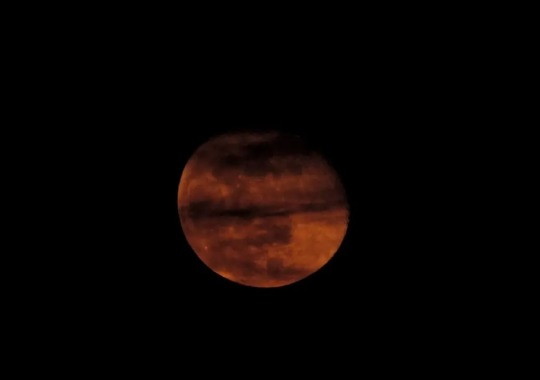
Intrigued, Li homed in on these polar spectra. While the Moon's surface is littered with iron-rich rocks, he nevertheless was surprised to find a close match with the spectral signature of hematite. The mineral is a form of iron oxide, or rust, produced when iron is exposed to oxygen and water. But the Moon isn't supposed to have oxygen or liquid water, so how can it be rusting?
The mystery starts with the solar wind, a stream of charged particles that flows out from the Sun, bombarding Earth and the Moon with hydrogen.

Hydrogen makes it harder for hematite to form. It's what is known as a reducer, meaning it adds electrons to the materials it interacts with. That's the opposite of what is needed to make hematite: For iron to rust, it requires an oxidizer, which removes electrons. And while the Earth has a magnetic field shielding it from this hydrogen, the Moon does not.
"It's very puzzling," Li said. "The Moon is a terrible environment for hematite to form in." So he turned to JPL scientists Abigail Fraeman and Vivian Sun to help poke at M3's data and confirm his discovery of hematite.
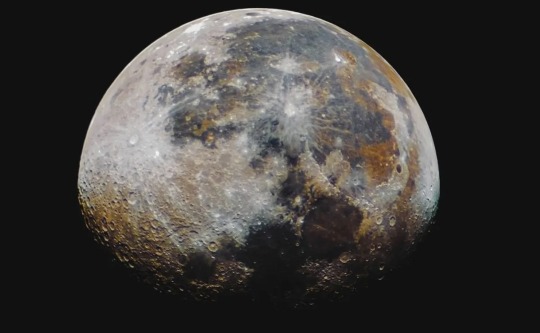
"At first, I totally didn't believe it. It shouldn't exist based on the conditions present on the Moon," Fraeman said. "But since we discovered water on the Moon, people have been speculating that there could be a greater variety of minerals than we realize if that water had reacted with rocks."
After taking a close look, Fraeman and Sun became convinced M3's data does indeed indicate the presence of hematite at the lunar poles. "In the end, the spectra were convincingly hematite-bearing, and there needed to be an explanation for why it's on the Moon," Sun said.
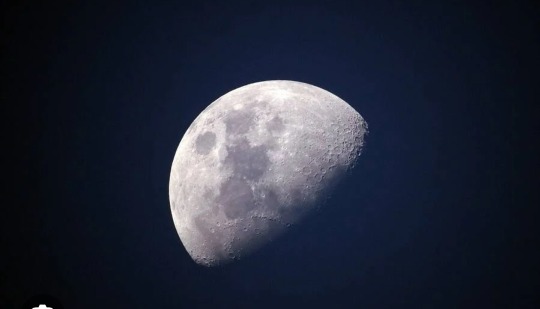
Their paper offers a three-pronged model to explain how rust might form in such an environment. For starters, while the Moon lacks an atmosphere, it is in fact home to trace amounts of oxygen. The source of that oxygen: our planet.
Earth's magnetic field trails behind the planet like a windsock. In 2007, Japan's Kaguya orbiter discovered that oxygen from Earth's upper atmosphere can hitch a ride on this trailing magnetotail, as it's officially known, traveling the 239,000 miles (385,00 kilometers) to the Moon.
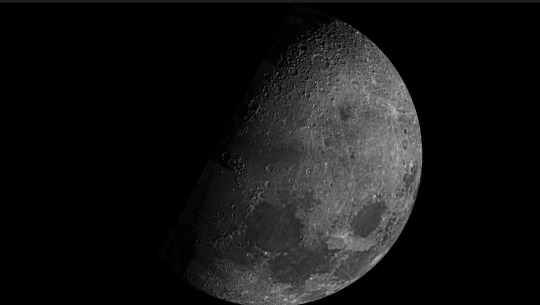
That discovery fits with data from M3, which found more hematite on the Moon's Earth-facing near side than on its far side. "This suggested that Earth's oxygen could be driving the formation of hematite," Li said. The Moon has been inching away from Earth for billions of years, so it's also possible that more oxygen hopped across this rift when the two were closer in the ancient past.
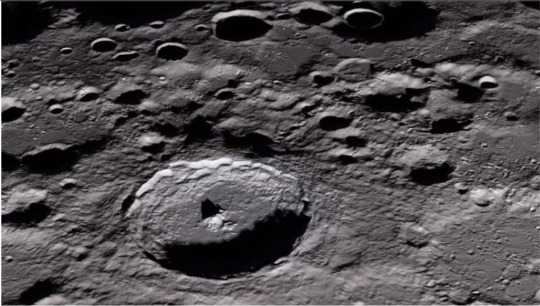
Then there's the matter of all that hydrogen being delivered by the solar wind. As a reducer, hydrogen should prevent oxidation from occurring.
But Earth's magnetotail has a mediating effect. Besides ferrying oxygen to the Moon from our home planet, it also blocks over 99% of the solar wind during certain periods of the Moon's orbit (specifically, whenever it's in the full Moon phase). That opens occasional windows during the lunar cycle when rust can form.
Originally published on NASA.gov
COMING UP!!
(Saturday, July 1st, 2023)
"WHAT IS TIME DISTORTION??"
#atmosphere#astronomy#outer space#alternate universe#astrophysics#universe#spacecraft#white universe#space#parallel universe#astrophotography#moon#rusty moon
206 notes
·
View notes
Text
Tour the Ocean through the Art of Sound
The ocean is one of the largest ecosystems on our planet. From eye-catching waves to the darkness of the twilight zone, it’s a place filled with mystery and rapid change.

For a scientist studying ocean color at NASA’s Goddard Space Flight Center in Greenbelt, Maryland, there was one more question–what does it sound like?
Before long, a “symphonic ocean experience” was born, combining satellite imagery, ocean color data and programming expertise. Learn more about how data gets converted to music and sound here:
youtube
This World Oceans Day, enjoy a tour of the ocean set to sound. Here we go:
Bering Sea
This melody explores the phytoplankton blooms in the western Bering Sea along the coast of the Kamchatka Peninsula collected by Aqua/MODIS on May 15, 2021. The melody created for this image was aimed at capturing the movement of the eddies or the circular movements of water. Data came from the image’s red, green, and blue channels.
youtube
Rio de la Plata
This melody explores a spring bloom in the South Atlantic Ocean off the coast of Argentina, Uruguay, and Brazil, lending the water many different shades of green, blue, and brown. The Rio de la Plata estuary in the northwest corner of the above image gets most of its tan coloration from sediments suspended in the water. The melody paired with the data evokes the sediment plumes and swirls happening off the coast.
youtube
Coral Sea
Data for the sounds of the Coral Sea were collected over the course of one year from the Aqua/Modis satellite. The information was extracted from a series of 32-day rolling averages for the year 2020, displaying the movement of chlorophyll a data.
youtube
Chlorophyll a is a specific form of chlorophyll used in photosynthesis. It absorbs most energy from wavelengths of violet-blue and orange-red light. It is a poor absorber of green and near-green portions of the spectrum, and that’s why it appears green.
Western Australia
Off the coast of western Australia is the appearance of swirls in the ocean. To catch the movement of the Indian Ocean, data was collected from 31 days of imagery examining blue wavelengths of light. The information was gathered from the Suomi-NPP/VIIRS instrument aboard the Joint Polar Satellite System (JPSS) series of spacecraft.
youtube
More moments of zen
Looking for more moments of zen? Explore them with NASA’s Soundcloud page, where many are out of this world. Curious on how we get these breathtaking ocean images? Take time to read about Goddard Oceanographer Norman Kuring and how he helped create them.
#World Oceans Day#oceanography#NASA#sonification#music#soundcloud#earth#planet earth#ocean#sea#ambient#Youtube
2K notes
·
View notes
Text
India is gearing up for its first-ever mission to study the sun, expected to launch in early September.
The observatory, called Aditya-L1 ("Aditya" means "sun" in Sanskrit), has arrived at its launch site on the island of Sriharikota, on India's east coast.
The Indian Space Research Organisation (ISRO), India's national space agency operating this mission, shared the first pictures of the spacecraft on X (formerly known as Twitter) on Aug. 13.
While the sun has been studied for a long time, scientists are still puzzled by how its outermost atmospheric layer, known as the corona, gets so hot — about 1.8 million degrees Fahrenheit (1 million degrees Celsius) hotter than the sun's surface. Researchers know little about what exactly unfolds on the sun before it unleashes solar flares and huge plasma clouds called coronal mass ejections (CMEs) into space — and at times toward Earth — and how CMEs accelerate to tremendous speeds close to the sun's disk.
Scientists are hoping the Aditya-L1 observatory will provide some clues into these decades-long mysteries.
Continue Reading.
113 notes
·
View notes
Text
What is your favourite Doctor Who story?


ROUND 3 MASTERPOST
synopses and propaganda under the cut
The Land of Happy Endings
Synopsis
The Eighth Doctor, John and Gillian visit Darbodia where they discover that the inhabitants have been purged of all imagination. Upon discovering that villainous scientist Wargonn has imprisoned the native species, the Doctor and his grandchildren work to foil his schemes.
Propaganda
Really beautiful story as the 8th Doctor DWM comics prepared to end. (@finalpam8000 )
An Adventure in Space and Time
Synopsis
A young producer frustrated by British television's glass ceiling, a new executive at the British Broadcasting Corporation, a young director of Indian descent, and an older actor struggling for artistic legitimacy come together in 1963 to start a brand new television programme called Doctor Who. After initial difficulties, the show becomes a hit, leaving the actor alone to carry on the show's traditions — and to face his increasingly ailing health.
Propaganda no propaganda submitted
47 notes
·
View notes